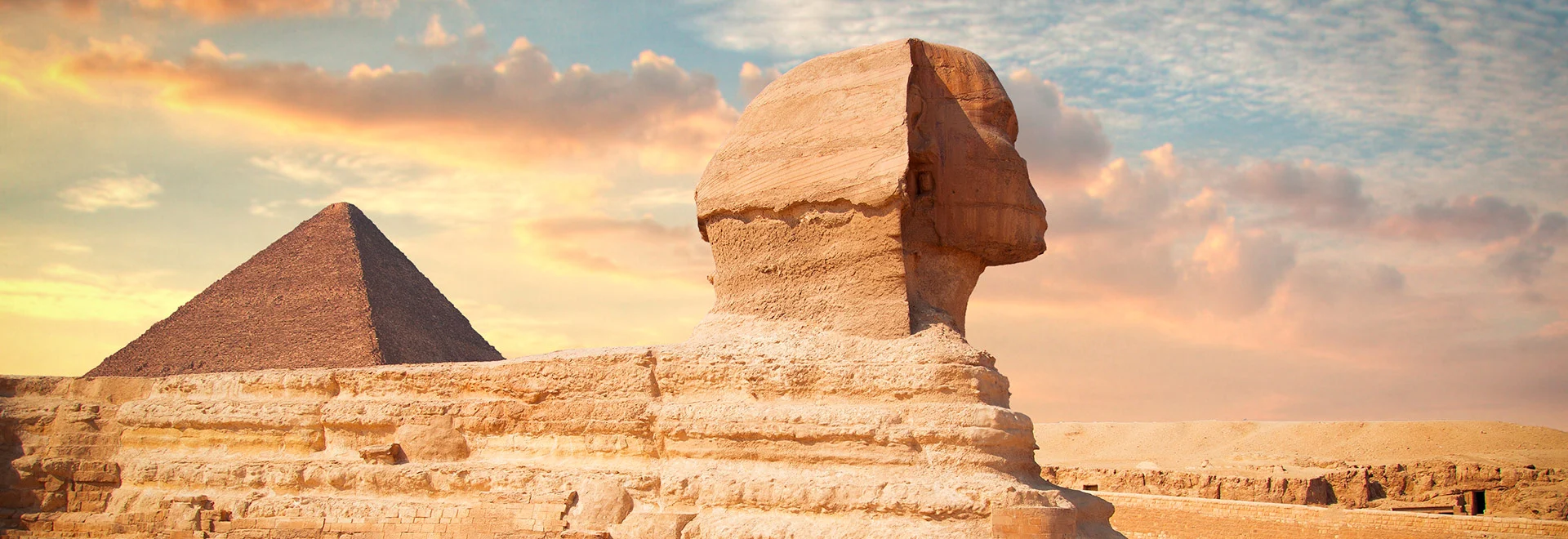Ah, the Great Sphinx of Giza! Imagine a colossal creature carved directly from the bedrock, a silent sentinel guarding the Giza pyramids for millennia.
Here's a description highlighting its key features and enduring mystery:
The Great Sphinx is a monumental limestone sculpture depicting a recumbent lion with a human head. Its massive body stretches an impressive 73 meters (240 feet) in length and reaches a height of 20 meters (66 feet), making it one of the largest and oldest monolithic statues in the world.
The human head, believed to represent the pharaoh Khafre (who also built the second-largest pyramid), gazes serenely eastward with enigmatic eyes. Its regal features – a calm expression, a royal headdress (nemes), and possibly the remnants of a ceremonial beard – speak to the power and divinity of ancient Egyptian rulers.
The powerful, leonine body symbolizes strength, majesty, and guardianship. Its paws are prominently displayed, and the hindquarters blend seamlessly with the natural rock formation from which it was carved.
Beyond its physical attributes, the Sphinx embodies:
- Mystery and Intrigue: Its exact age, purpose, and even the extent of its original form are still subjects of debate among scholars, adding to its captivating aura.
- Endurance and Timelessness: Having weathered countless centuries of wind, sand, and human interaction, the Sphinx stands as a powerful testament to the longevity of ancient Egyptian civilization.
- Iconic Symbolism: It has become a globally recognized symbol of Egypt, its ancient history, and its enduring mystique.
In essence, the Great Sphinx of Giza is more than just a statue; it's a powerful and awe-inspiring icon, a silent witness to history, and a perpetual source of fascination and wonder. Its imposing presence and enigmatic gaze continue to captivate visitors and scholars alike, making it an unforgettable highlight of the Giza plateau.

